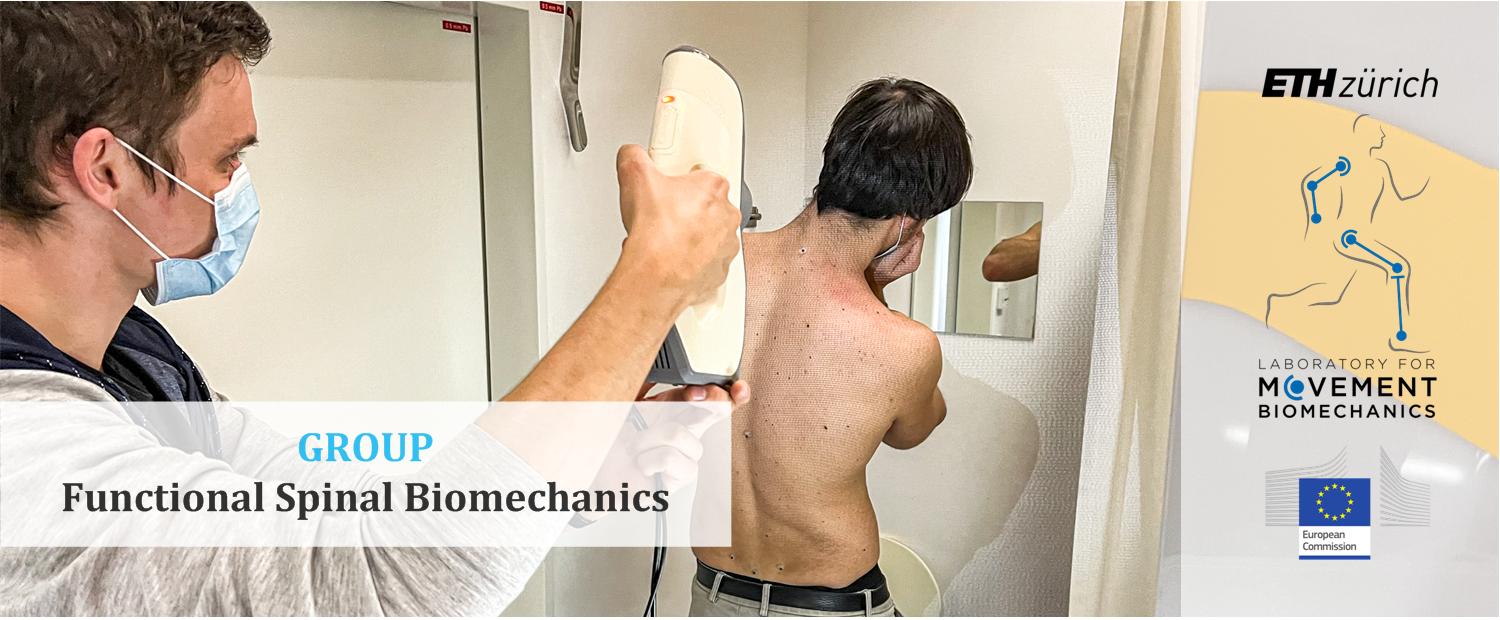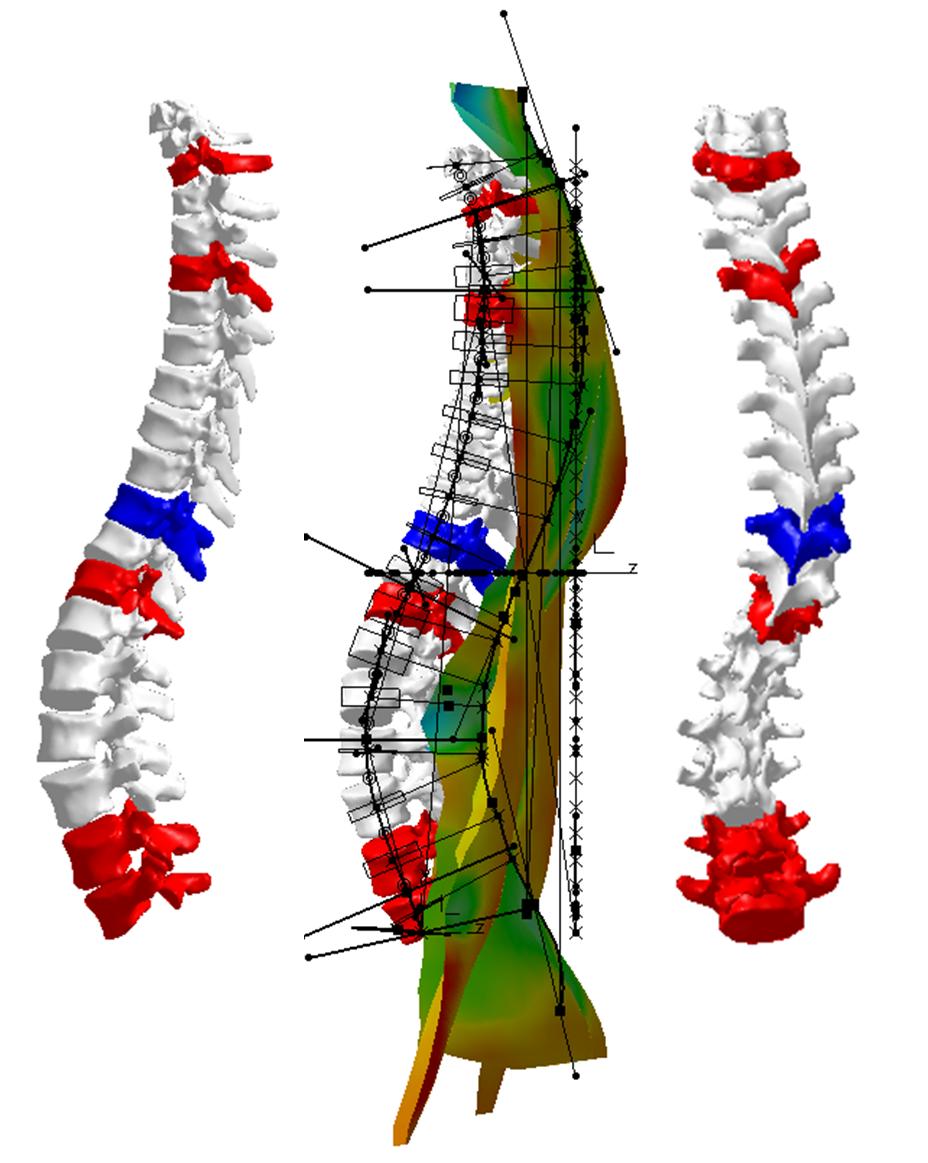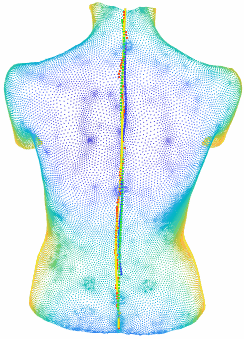Functional Spinal Biomechanics
The goal of the Functional Spinal Biomechanics (RSB) Group is to assess the back of individuals with normal and disordered spine in order to better understand the relationships between its functional ability, severity of deformities and their consequences on the back shape and overall appearance. Key technologies include non-ionizing optical acquisition devices for static and dynamic markerless capturing of the various poses of the trunk. The main objectives are: Evaluation of spinal disorders (idiopathic scoliosis) non-invasively using optical 3D scanning; Understanding the relationships between external surface shape and internal deformity; Validation of spinal deformities against standard modalities (X-ray, CT/MRI); Monitoring of deformity progression, etc.

Projects

Computational 3D modelling of Adolescent Idiopathic Scoliosis (AIS)
In vivo measurement of the human spine deformities is harmful due to increased and cumulative X-ray radiation, particularly in monitoring of deformity progression. We use non-ionizing sources e.g. structured light to digitalize human’s back and then to model subject-specific 3D deformity.
Read more

From back shape to spine: radiation-free assessment of posture, motion and pathologies of the spine
Development and clinical validation of algorithms to generate dynamic 3D models of the human spine. These algorithms are solely based on the 3D back surface and utilize statistical shape modelling and machine learning.

The translucent back: utilizing optical 3D scanning and thermal imaging to assess internal deformities of the spine
Development of models to estimate the spinal curvature from dorsal trunk topography scans and infrared thermography. Ultimately, we aim to use this approach to monitor scoliosis patients non-invasively and predict disease progression.